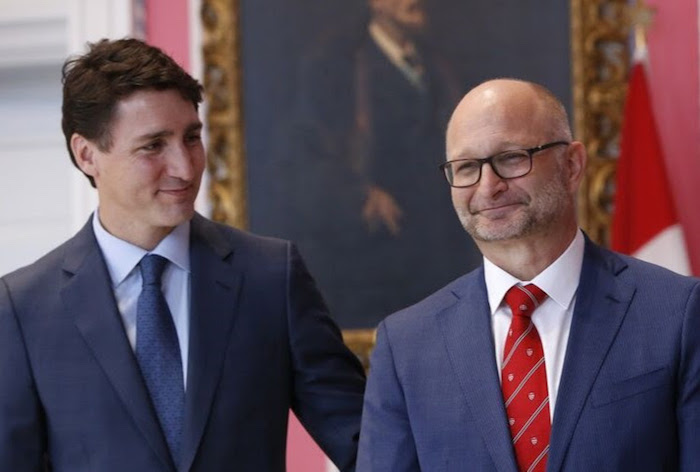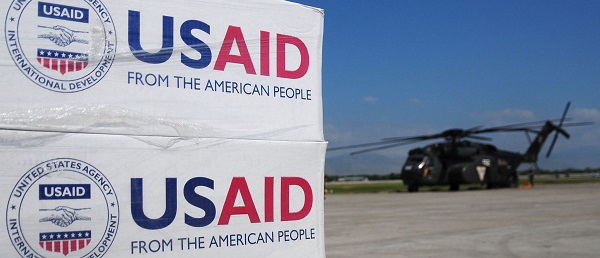Frontier Centre for Public Policy
“Indian Industry” cronyism

From the Frontier Centre for Public Policy
So, if the huge marginalized and dependent indigenous underclass does not benefit from all that money that changes hands inside the Indian Industry who is benefiting?
Former Justice Minister David Lametti’s departure from government and immediate acceptance into an expensive law firm that makes millions from indigenous issues is a recent example of what has long been called “The Indian Industry” at work.
It is unknown who first coined the term “The Indian Industry.” Many indigenous and non-indigenous writers have used the term over the decades. Indigenous author, Calvin Helin made liberal use of the term in “Dances With Dependency” as did Cree writer, Harold Johnson, in “Firewater- How Alcohol is Killing My People”
However, it was Frances Widdowson and Albert Howard’s important 2009 book “Disrobing The Aboriginal Industry” that first examined the Indian Industry in detail.
The authors chose to use the term “Aboriginal Industry”, perhaps for reasons of politeness, but they are describing the Indian Industry. They tell in detail how extensive it has become in Canada. Entire universities, law firms and virtually all Canadian institutions have become largely dependent on the money sloshing around within it. Almost all of that money comes in one way or another from taxpayers.
But they note the supreme irony that the Indian Industry is not improving the lot of the very people it is supposed to be helping – Canada’s marginalized and dependent indigenous underclass:
“Despite the billions of dollars devoted to aboriginal causes, Native people in Canada continue to suffer all the symptoms of a marginalized existence – high rates of substance abuse, violence, poverty. Disrobing the Aboriginal Industry argues that the policies proposed to address these problems – land claims and self government – are in fact contributing to their entrenchment.”
However, “Disrobing” was written in 2009, and since the Trudeau Liberals took over in 2015 the money flowing into the Indian Industry has increased dramatically in volume. In fact, that money flow, and the enormous indigenous contingent liabilities that now total $76,000,000,000 are growing so quickly – seven times higher since Trudeau took over – that the parliamentary budget officer has raised the alarm. Canada’s economic future is being compromised.
It isn’t only indigenous contingent liabilities – money owed for indigenous claims – that have grown so alarmingly, it is all indigenous spending. Reports from the Fraser Institute keep track of the shocking increases in total indigenous spending since the Trudeau Liberals took power. It is fair to say that the truly frightening federal government deficits in recent years occurred largely because of this extra indigenous spending.
And it isn’t only the largesse of the Trudeau government that has dumped money into the Indian Industry. Since 2015 it has also been the residential school bonanza. Clever lobbyists have been able to extract tens of billions of dollars from taxpayers by making highly exaggerated claims that residential schools were places of horror, where priests tortured, murdered and secretly buried thousands of indigenous children. These claims are nonsense. Although it is completely true that the residential school system was deeply flawed, and that many indigenous children were badly hurt by their residential school experience, it is also true that many received educations they would otherwise have been denied. But, more to the point, there is no evidence that even one child was murdered, or secretly buried during the entire history of residential schools. Despite that, baseless claims of clandestine deaths and secret burials have worked very well for everyone involved in the Indian Industry. Residential schools have become the Indian Industry’s single biggest money earner.
But, as Widdowson and Howard noted years ago, the Indian Industry has done nothing to solve what has always been called Canada’s “Indian problem” – namely that the great majority of Canada’s indigenous people remain far behind the mainstream on every social indicator. They are the least healthy, worst educated, most incarcerated, shortest living of any demographic by far.
They were that way before 2015, and they remain that way now. The Indian Industry, and the astounding amounts of money poured into it since 2015 haven’t changed those depressing numbers one bit.
A recent CBC investigative report on the dismal conditions at the St. Theresa Point reserve in Manitoba is a case in point. It is one of Canada’s hundreds of totally dependent reserves. Families there of as many as 23 people per house live in dilapidated housing, in a community that is almost totally unemployed and dependent. The increased money flow since 2015 appears to have only made dependency and all of its related problems – addiction, crime, domestic violence – worse.
So, if the huge marginalized and dependent indigenous underclass does not benefit from all that money that changes hands inside the Indian Industry who is benefiting?
It is people like David Lametti and Perry Bellegarde, and their law firms, universities, etc. – none of whom need special help.
And here is the second irony: The Indian Industry feeds on the human misery on display at communities like St. Theresa Point.
It needs that misery to continue to keep the money flowing.
This is not to suggest that any of the people and institutions that are part of it are deliberately perpetuating poverty, or doing anything illegal. They aren’t. They are simply picking up all of the free money our elected representatives and courts throw into the Indian Industry every day. They pick it up because we put it there.
It is probably not fair to single out David Lametti and Perry Bellegarde for their participation in this obscene waste of taxpayer money that is the Indian Industry. They are just two of many enterprising such people who have come before them, and many who will come after them. They probably convince themselves that they are doing something useful. They aren’t. They are part of an Indian Industry that fleeces taxpayers, while pretending to be solving the indigenous underclass problem, while making it worse. At a certain point, will Canadians grow tired of this game?
Because it has become abundantly clear that the federal indigenous policy that has developed over decades is a total failure. While privileged indigenous people who don’t need special attention are benefitting spectacularly, the indigenous people who do need the help are becoming more helpless and dependent all the time. The huge increase in the money dumped into uneconomic communities, like St. Theresa Point, is making things worse, not better. It is keeping young people, who should be moving to job centres, trapped in hopeless communities.
Renowned American economist and philosopher Thomas Sowell argues convincingly that simply giving money to chronically dependent people makes things worse, not better. I’m sure that Mr. Lametti and Mr. Bellegarde don’t want that to happen, but it is. And it is the Indian Industry that is making them wealthy that is doing it.
At some point the entire Indian Industry, with its racist Indian Act and brutal reserve system, will come to an end. Indigenous people living on Indian reserves now comprise only 1% of the Canadian population. Despite high birth rates on reserves, more and more reserve residents are moving away from them. By most measures only 25-40% of status Indians now live on reserves, and that percentage steadily falls.
Meanwhile, immigrants are steadily flowing into Canada. According to some estimates, Canada might have a population of 100 million by the end of the century. The percentage of the population living on reserves will become far less than 1%. Maintaining a completely separate system and bureaucracy for one tiny segment of the population will make less and less sense – especially to those millions of new Canadians, who don’t feel that they owe any special debt to indigenous people.
But while this natural process works itself out, the Indian Industry, now armed with the deeply divisive United Nations Declaration on the Rights of Indigenous Peoples (UNDRIP), is doing permanent damage to the country. We see that process now playing out in British Columbia, where their provincial version of UNDRIP- DRIPA – is wreaking havoc on their natural resources industry. It has become not only a virtual indigenous veto on any mining, pipeline or development project, it is now directly threatening basic landowner rights. In what is much like Chicago during the days of the Mafia, indigenous leaders all demand their “cut” before any project can proceed. This harmful process is spreading all across Canada, now that Canada has foolishly adopted UNDRIP.
And, in what is a perfect illustration of how the Indian Industry works, Perry Bellegard, as AFN Grand Chief, lobbied the government to bring in UNDRIP, David Lamerti, as Justice Minister, brought it in, and now Bellegrde and Lametti and their law firm benefit from it financially. Meanwhile, the taxpayer pays, and the marginalized and dependent indigenous majority remains marginalized and dependent.
Isn’t it time to end this farce? People who need education, and assistance to move to job centres should get that help. But pretending that making privileged people like David Lametti and Perry Bellegarde wealthier by dumping endless amounts of cash into Indian Industry cronyism is somehow good for indigenous people is nuts.
It isn’t. It’s bad for them, and it’s bad for Canada.
Brian Giesbrecht, retired judge, is a Senior Fellow at the Frontier Centre for Public Policy.
Frontier Centre for Public Policy
Canada’s New Border Bill Spies On You, Not The Bad Guys

From the Frontier Centre for Public Policy
By Lee Harding
Lee Harding warns that the federal government’s so-called border bill lets officials snoop on your data, ban big cash payments and even open your mail – all without a warrant
Think Bill C-2 is about stopping fentanyl? Think again. It lets the feds snoop your data, open your mail and ban big cash payments – no warrant needed
The federal government is using the pretext of border security, the fentanyl crisis and transnational crime to push through Bill C-2, legislation that dangerously expands surveillance powers, undermines Canadians’ privacy and restricts financial freedom. This so-called Strong Borders Act is less about protecting borders and more about policing citizens.
Bill C-2, a 130-page omnibus bill introduced on June 3, grants broad new powers to government agencies to spy on Canadians and share personal information with foreign countries. A more honest title might be the Snoop and Gossip Act.
Among its most intrusive provisions, the bill would make it illegal for any business, profession or charity to accept cash payments over $10,000, even if made in smaller, related transactions. Want to pay a contractor $10,001 in five separate payments for home renovations? Too bad.
The Justice Centre for Constitutional Freedoms quickly condemned the move. “Restricting the use of cash is a dangerous step toward tyranny and totalitarianism,” the organization posted to X. “Cash gives citizens privacy, autonomy, and freedom from surveillance by government and by banks.”
Under Bill C-2, internet service providers could be compelled—under threat of fines—to hand over names, locations and “pseudonyms” of users without a warrant. Any peace officer or public officer can demand this data by merely claiming “reasonable grounds to suspect” an offence “has been or will be committed.”
It doesn’t stop there. The bill would also authorize the government to open private mail under the same vague threshold of suspicion.
Experts in law and privacy say the bill is a massive overreach. University of Ottawa internet law scholar Michael Geist and Kate Robertson of the University of Toronto’s Citizen Lab both point out that successive federal governments have sought to expand internet surveillance for years, but Bill C-2 goes further than ever before.
“Bill C-2’s big brother tactics combine expansive warrantless disclosure with unprecedented secrecy,” Geist warns. He adds that the bill “overreaches by including measures on internet subscriber data that have nothing to do with border safety or security but raise privacy and civil liberties concerns.”
If the intent were truly to combat fentanyl trafficking and transnational crime, better tools already exist. Conservative MP Frank Caputo pointed out that the bill has 16 parts but says nothing about increasing penalties or jail time for fentanyl traffickers.
“There is nothing about bail in the bill,” Caputo said during early debate on the bill. “In this omnibus bill, it says that offenders can serve their sentence for trafficking in fentanyl from their couch.”
Bloc Québécois MP Claude DeBellefeuille argued that strengthening border security requires more boots on the ground. Two rural border crossings in her riding recently had their staffed hours cut in half.
“It is estimated that the CBSA (Canada Border Services Agency) already has a shortage of between 2,000 and 3,000 border services officers for current duties. If they are given new responsibilities, however necessary, there will be an even greater shortage,” she said.
Not only does Bill C-2 contradict Supreme Court precedent. It also sets the stage for Canada to share sensitive personal information with foreign governments. In 2014, the court ruled that Canadians have a “reasonable expectation of privacy in the subscriber information” provided to internet service providers and that police requests for such data amount to a “search” requiring a warrant.
Robertson warns that the bill not only defies this precedent but also enables Canada to share this dubiously acquired information with 49 other countries under the Second Additional Protocol to the Cybercrime Convention. Canada signed the agreement in 2023 but hasn’t ratified it. Bill C-2 would make that possible.
She calls the protocol’s weak human rights safeguards “a direct threat to existing protections under international human rights law.” Robertson co-authored a submission urging the Department of Justice to reject the 2AP and instead support data-sharing frameworks that are built on consistent rights protections across all signatories.
Further complicating matters, Canada is in negotiations with the United States over a data-sharing agreement under that country’s CLOUD Act. Canada’s willingness to comply may reflect lingering trade pressures from the Trump administration, pressures that could again push Canada to compromise its legal independence and citizens’ rights.
This bill should be scrapped or thoroughly revised. Canadians should not have to surrender their privacy and human rights to serve a global law enforcement agenda that disregards civil liberties. If the line between national security and authoritarianism is erased, the greatest threat to Canadians may no longer be drug traffickers—it may be their own government.
Lee Harding is a research fellow at the Frontier Centre for Public Policy.
Frontier Centre for Public Policy
New Book Warns The Decline In Marriage Comes At A High Cost

From the Frontier Centre for Public Policy
Travis Smith reviews I… Do? by Andrea Mrozek and Peter Jon Mitchell, showing that marriage is a public good, not just private choice, arguing culture, not politics, must lead any revival of this vital institution.
Andrea Mrozek and Peter Jon Mitchell, in I… Do?, write that the fading value of marriage is a threat to social stability
I… Do? by Andrea Mrozek and Peter Jon Mitchell manages to say something both obvious and radical: marriage matters. And not just for sentimental reasons. Marriage is a public good, the authors attest.
The book is a modestly sized but extensively researched work that compiles decades of social science data to make one central point: stable marriages improve individual and societal well-being. Married people are generally healthier, wealthier and more resilient. Children from married-parent homes do better across almost every major indicator: academic success, mental health, future earnings and reduced contact with the justice system.
The authors refer to this consistent pattern as the “marriage advantage.” It’s not simply about income. Even in low-income households, children raised by married parents tend to outperform their peers from single-parent families. Mrozek and Mitchell make the case that marriage functions as a stabilizing institution, producing better outcomes not just for couples and kids but for communities and, by extension, the country.
While the book compiles an impressive array of empirical findings, it is clear the authors know that data alone can’t fix what’s broken. There’s a quiet but important concession in these pages: if statistics alone could persuade people to value marriage, we would already be seeing a turnaround.
Marriage in Canada is in sharp decline. Fewer people are getting married, the average age of first marriage continues to climb, and fertility rates are hitting historic lows. The cultural narrative has shifted. Marriage is seen less as a cornerstone of adult life and more as a personal lifestyle choice, often put off indefinitely while people wait to feel ready, build their careers or find emotional stability.
The real value of I… Do? lies in its recognition that the solutions are not primarily political. Policy changes might help stop making things worse, but politicians are not going to rescue marriage. In fact, asking them to may be counterproductive. Looking to politicians to save marriage would involve misunderstanding both marriage and politics. Mrozek and Mitchell suggest the best the state can do is remove disincentives, such as tax policies and benefit structures that inadvertently penalize marriage, and otherwise get out of the way.
The liberal tradition once understood that family should be considered prior to politics for good reason. Love is higher than justice, and the relationships based in it should be kept safely outside the grasp of bureaucrats, ideologues, and power-seekers. The more marriage has been politicized over recent decades, the more it has been reshaped in ways that promote dependency on the impersonal and depersonalizing benefactions of the state.
The book takes a brief detour into the politics of same-sex marriage. Mrozek laments that the topic has become politically untouchable. I would argue that revisiting that battle is neither advisable nor desirable. By now, most Canadians likely know same-sex couples whose marriages demonstrate the same qualities and advantages the authors otherwise praise.
Where I… Do? really shines is in its final section. After pages of statistics, the authors turn to something far more powerful: culture. They explore how civil society—including faith communities, neighbourhoods, voluntary associations and the arts can help revive a vision of marriage that is compelling, accessible and rooted in human experience. They point to storytelling, mentorship and personal witness as ways to rebuild a marriage culture from the ground up.
It’s here that the book moves from description to inspiration. Mrozek and Mitchell acknowledge the limits of top-down efforts and instead offer the beginnings of a grassroots roadmap. Their suggestions are tentative but important: showcase healthy marriages, celebrate commitment and encourage institutions to support rather than undermine families.
This is not a utopian manifesto. It’s a realistic, often sobering look at how far marriage has fallen off the public radar and what it might take to put it back. In a political climate where even mentioning marriage as a public good can raise eyebrows, I… Do? attempts to reframe the conversation.
To be clear, this is not a book for policy wonks or ideologues. It’s for parents, educators, community leaders and anyone concerned about social cohesion. It’s for Gen Xers wondering if their children will ever give them grandchildren. It’s for Gen Zers wondering if marriage is still worth it. And it’s for those in between, hoping to build something lasting in a culture that too often encourages the opposite.
If your experiences already tell you that strong, healthy marriages are among the greatest of human goods, I… Do? will affirm what you know. If you’re skeptical, it won’t convert you overnight, but it might spark a much-needed conversation.
Travis D. Smith is an associate professor of political science at Concordia University in Montreal. This book review was submitted by the Frontier Centre for Public Policy.
-

 Fraser Institute1 day ago
Fraser Institute1 day agoBefore Trudeau average annual immigration was 617,800. Under Trudeau number skyrocketted to 1.4 million annually
-

 MAiD1 day ago
MAiD1 day agoCanada’s euthanasia regime is already killing the disabled. It’s about to get worse
-

 Frontier Centre for Public Policy1 day ago
Frontier Centre for Public Policy1 day agoNew Book Warns The Decline In Marriage Comes At A High Cost
-

 Business1 day ago
Business1 day agoPrime minister can make good on campaign promise by reforming Canada Health Act
-

 Addictions1 day ago
Addictions1 day ago‘Over and over until they die’: Drug crisis pushes first responders to the brink
-

 International1 day ago
International1 day agoChicago suburb purchases childhood home of Pope Leo XIV
-

 Daily Caller1 day ago
Daily Caller1 day agoUSAID Quietly Sent Thousands Of Viruses To Chinese Military-Linked Biolab
-

 illegal immigration2 days ago
illegal immigration2 days agoICE raids California pot farm, uncovers illegal aliens and child labor



